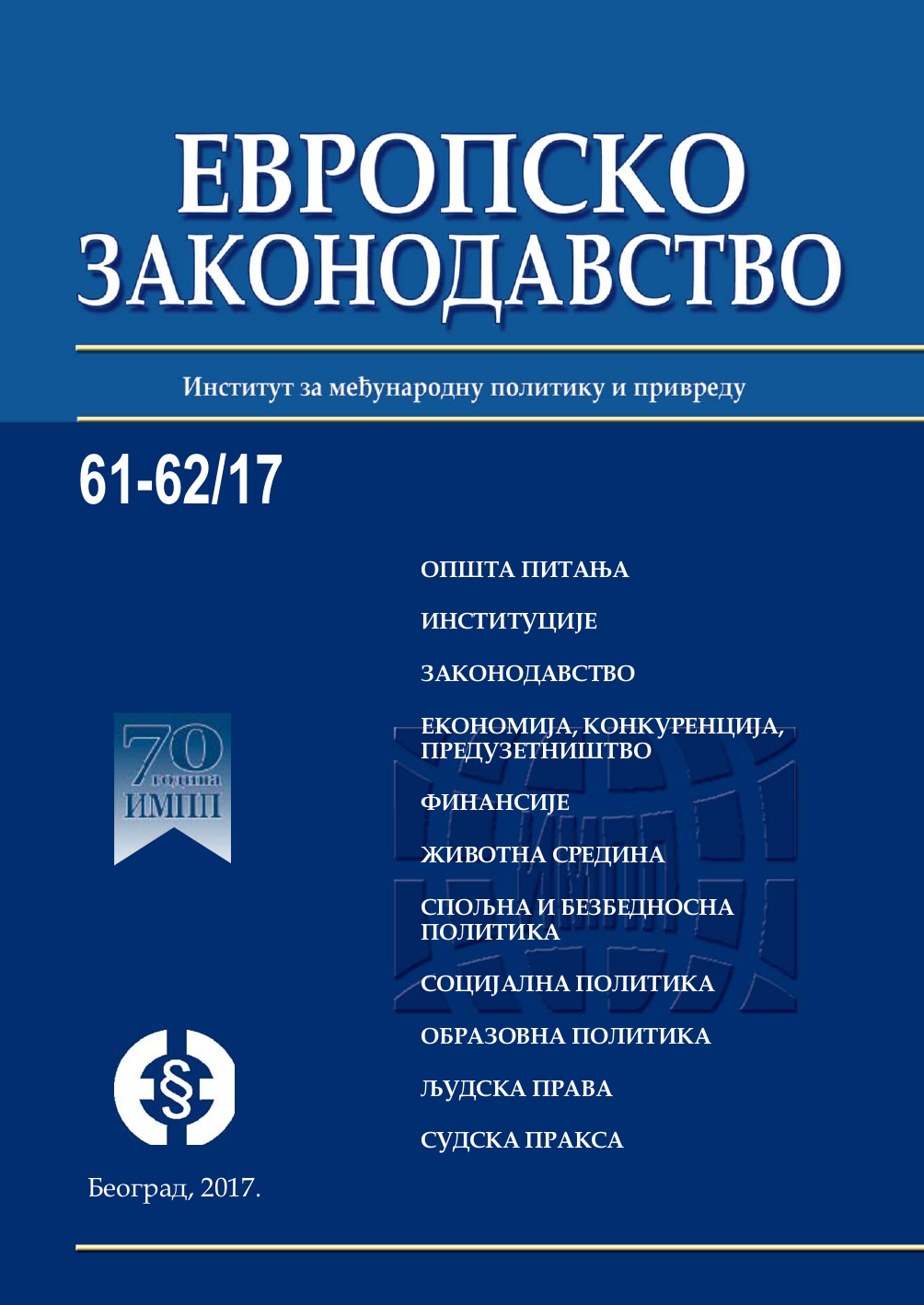Стечајни поступак у Републици Србији у контексту начела Европске конвенције о стечају
Bankruptcy proceedings in the Republic of Serbia in the context of the principles of the European Bankruptcy Convention
Author(s): Dijana Savić BožićSubject(s): EU-Legislation, Commercial Law
Published by: Институт за међународну политику и привреду
Keywords: bankruptcy proceedings;regulatory framework;European Bankruptcy Convention
Summary/Abstract: The market daily makes the selections among companies by continuously setting increasing number of standards and requirements, which should be answered in order to ensure survival. Insufficient ability to keep pace with competitors gives rise to serious financial problems, which may result in the exit from the market and the start of the business cessation process. When an enterprise encounters difficulties in performing its activities that are mainly of a financial nature, when it is no longer able to function normally, or when it is unable to settle its obligations, a bankruptcy is imposed as a solution to the problem. Opening a bankruptcy procedure can mean the beginning of the cessation of business, its closure or extinguishing, which unfortunately happens in the vast majority of cases. The need to protect creditors' interests becomes stronger in companies whose continuation of operations is questioned due to high losses and inability to pay its obligations. The task of bankruptcy laws is to protect the interests of creditors, regardless of whether the company's crisis will end with a reorganization or a bankruptcy. The main purpose of the bankruptcy procedure is to settle the claims of creditors depending on the total volume of their claims and the available bankruptcy estate. Also, the opening of bankruptcy should stop the possible dissipation and the alienation of the assets of the debtor in order to maximize the creditors' claims. In order for bankruptcy proceedings to be initiated, it is necessary to fulfil certain legal requirements. According to the current Bankruptcy Law of the Republic of Serbia, the main reason for the initiation of bankruptcy proceedings is the inability to make payments (complete suspension of payments from the company's current account for more than 30 days) or overindebtedness or insolvency. Since bankruptcy is a forced procedure, it consists of several steps, of which the most important is the initiation of bankruptcy proceedings, the formation and liquidation of the bankruptcy estate, the settlement of creditors from the bankruptcy estate and the conclusion of the bankruptcy proceeding. Solving bankruptcy issues contributes to increasing the efficiency of the economy. Serbia's membership in the Council of Europe involves harmonizing laws and adapting to European standards in the area of bankruptcy and bankruptcy legislation. Legal and economic experts point out that the adoption of the regulations in the European Convention on Certain International Types of Bankruptcy and Bankruptcy Proceedings contributes to the improvement of legal economic regulations in the Republic of Serbia…
Journal: Европско законодавство
- Issue Year: 2017
- Issue No: 61-62
- Page Range: 273-284
- Page Count: 12
- Language: Serbian

